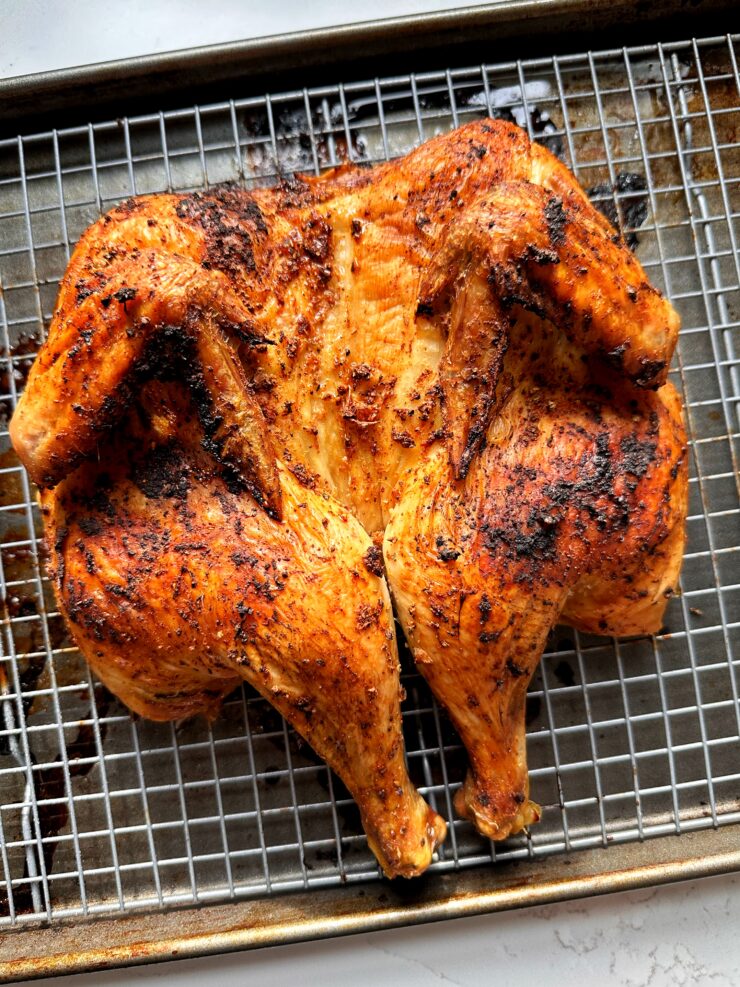Spatchcocking might sound like a quirky cooking term, but it’s actually a super handy method for preparing poultry that helps it cook faster and more evenly. I’m often surprised by how many home cooks haven’t heard of it. If you’ve tried to roast a whole chicken only to end up with dry breast meat and undercooked thighs, spatchcocking could be just what your kitchen needs. Here’s a full breakdown of what spatchcocking is all about. I think more people should give it a try.

What Exactly Is Spatchcocking?
Spatchcocking basically means flattening a whole bird, such as a chicken, turkey, or even duck, by removing the backbone and pressing it open. You might see this called “butterflying,” but spatchcocking is the more specific cooking term. It’s all about prepping poultry so it can lay flat. This helps it cook more evenly and a lot faster than roasting the traditional way.
This technique has been around for ages and shows up in different cuisines across the globe. It’s especially popular for grilling and roasting, and it’s become something of a go-to hack for anyone who wants juicy meat with crispy skin every time.
Benefits of Spatchcocking
Plenty of folks ask why they should bother with spatchcocking when you can just toss a whole chicken or turkey in the oven. Here are the biggest perks:
- Faster Cooking Times: Because the bird lays flat, hot air circulates more evenly, cutting down roasting or grilling time by up to a third.
- Crispier Skin: With all the skin exposed on top, you get a gorgeous, crispy surface that’s much harder to achieve when roasting the traditional way.
- Juicier Meat: Without the breast sitting high above the thighs, everything cooks at the same pace. This means fewer dry spots and juicier results.
- Better Seasoning Coverage: Since more surface area is exposed, seasoning and marinade soak in even better. No bland bites here.
- Eye-Catching Presentation: Spatchcocked birds make for a fun, next-level cool look at any dinner table.
I think these perks really make the extra step worthwhile, especially if you’re aiming to impress guests or just want your weeknight roast to taste a notch better.
How to Spatchcock a Chicken (Step by Step)
Spatchcocking might sound tricky, but it’s honestly pretty simple once you get the hang of it. All you need is a whole bird and some sharp kitchen shears (or a heavy chef’s knife if shears aren’t available).
- Get Your Equipment Ready: Place your chicken (or turkey) breast side down on a sturdy cutting board. Grab your kitchen shears.
- Remove the Backbone: Starting at the tail end, cut up one side of the backbone, then cut up the other side to completely remove it. You can save the backbone for homemade stock.
- Flip and Flatten: Flip the bird over so the breast side is facing up. Press down firmly on the breastbone with both hands until you hear a little crack and the bird flattens out.
- Trim and Tidy Up: Remove any extra fat or bits of bone. Some folks snip off wing tips so they don’t burn.
- Season and Cook: Once your bird is nice and flat, season as you like. It’s ready for roasting or grilling!
If you’re more of a visual learner, plenty of video tutorials are available online. After doing this once or twice, spatchcocking will feel almost as quick as standard prep.
Tips for Roasting and Grilling Spatchcocked Poultry
Spatchcocking opens up a bunch of new options in the kitchen. Here are my favorite tips for getting top results whether you’re roasting in the oven or firing up the grill:
- Dry the Skin Well: Pat the skin with paper towels before seasoning. This helps get crispy, golden skin.
- Add Vegetables Underneath: Roasting the bird on a bed of veggies (like onions, potatoes, or carrots) soaks them in flavor and gives you a bonus side dish.
- Use High Heat First: Start your oven or grill on high for the first 15 minutes, then reduce heat to finish. This helps crisp the skin fast without drying the meat.
- Monitor Internal Temps: Aim for 165°F (74°C) in the thickest part of the breast and thigh. A meat thermometer makes this easy to double-check.
- Rest After Cooking: Let the bird rest under foil for 10-15 minutes after cooking to keep juices locked in.
You can spatchcock all sorts of poultry, not just chicken. Turkey, Cornish hens, and duck all work, and it’s great for lean game birds, too.
Pitfalls to Watch Out for When Spatchcocking
Like any kitchen technique, spatchcocking comes with its own tricks and things to keep an eye out for. Here are some common hiccups and how to avoid them:
- Dull Shears: Trying to cut through bones with dull tools is just frustrating. Invest in a decent pair of poultry shears for clean cuts.
- Pressing Too Gently: If you don’t press hard enough to break the breastbone, the bird won’t lay flat. Use both hands and some elbow grease.
- Uneven Cooking: Sometimes the thigh joints are more tucked under. Spreading them out helps everything cook evenly.
- Burnt Tips: Wing tips and thinner bits can overcook quickly. Tuck them underneath or snip them off before roasting.
- No Room in the Pan: A spatchcocked bird takes up more space. Make sure your roasting tray or grill is large enough to handle it.
Careful prep and a quick check before you start help avoid most of these issues. Plus, working with the right tools makes the task much smoother, so don’t skip sharpening those shears!
Real-Life Uses for Spatchcocking
Spatchcocking isn’t just a restaurant trick. Home cooks all over the world use it for faster weekend dinners or fun holiday meals. Here are a few ways I’ve found spatchcocking to be super useful:
- Weeknight Dinners: Get a whole roast chicken on the table in 45 minutes instead of an hour and a half.
- Grill Parties: Lay that chicken flat on the grill and you’ll have juicy, smoky meat with awesome crispy skin.
- Holiday Feasts: Spatchcocking a turkey is becoming more popular for Thanksgiving, especially with folks who want more evenly cooked meat and don’t want to fuss with long roasts.
- Meal Prep: Flattening the bird lets you cover it in marinades and seasonings, which means big flavor in every bite, whether you’re eating it fresh or saving leftovers for the week.
This technique is a real time-saver, especially if you love experimenting with new flavors. Everything gets seasoned so well and the result never fails to impress.
Top Questions About Spatchcocking
Lots of people have questions when they hear about spatchcocking for the first time. Here are a few of the top ones I get asked:
Question: Does spatchcocking work for any size of chicken or turkey?
Answer: Yes. Spatchcocking works great for birds of all sizes. The larger the bird, the more time you save by flattening it before cooking.
Question: Do I need special equipment to spatchcock?
Answer: Sharp kitchen shears or strong poultry scissors make the job much easier, but if you only have a sturdy chef’s knife, you can use that too.
Question: Is there a difference between spatchcocking and butterflying?
Answer: In the case of poultry, both terms mean the same thing—removing the backbone so the bird can lay flat. Some people use “butterflying” for splitting other cuts of meat, like pork chops or lamb legs.
Question: Is it safe to spatchcock raw chicken at home?
Answer: Absolutely, as long as you follow the usual food safety habits. Wash your hands, clean surfaces and tools, and cook poultry to the right temperature.
Quick Spatchcocking Cheat Sheet
Here’s a down-to-earth list to keep handy when you want to spatchcock a bird:
- Line up your tools: shears, cutting board, paper towels
- Trim the backbone. Start slow until you get the feel
- Break the breastbone so it lays nice and flat
- Pat it dry, season it up, and roast or grill
- Rest the bird when you’re done before serving
If you’re short on time or just want juicy, crisp-skinned poultry, spatchcocking is worth checking out. Once you get used to this technique, you may never go back to traditional roasting again. Try experimenting with your favorite seasonings, and bring a little next-level cool flair to your dinner table every time you cook!
